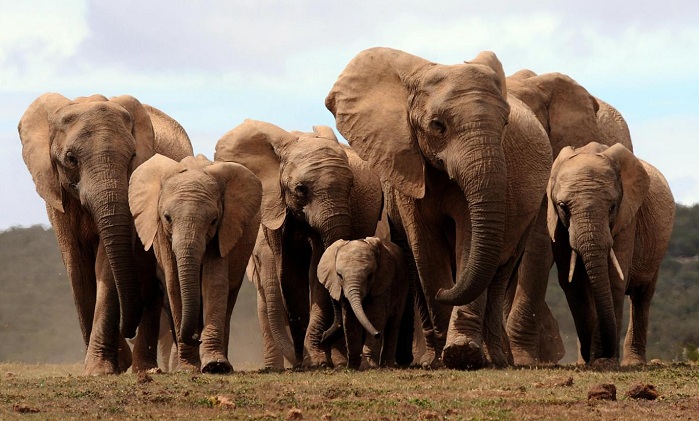Most of the world's mammals are prone to cancer, but elephants are strangely resistant. They're not completely immune, but compared to humans, they get it surprisingly rarely - especially considering that they have 100 times the number of cells that humans do.
Cancer occurs when a cell randomly mutates during division, so the fact that only around 1 in 20 elephants develops cancer, compared to 1 in 5 humans, is extremely curious.
Researchers had been trying to figure out why this was the case for decades, but it was only a few years ago that a team of researchers narrowed this incredible trait down to an overabundance of a gene called p53, which suppresses tumours. African elephants have 40 copies of p53. Humans have just one.
But now a team of researchers at the University of Utah has found more clues as to how it occurs, and it's not just down to p53.
They studied what had been known for several decades since the 1960s as "junk DNA" - DNA that does not code for proteins. That doesn't make it useless, however - recent studies have found that it performs other functions, such as being able to control when and where genes are expressed.
"People used to call the noncoding regions 'junk DNA', but I see it as a jungle that has not been explored," said neurobiologist Christopher Gregg from the University of Utah.
"We are exploring the noncoding regions to try to discover new parts of the genome that might control different diseases."
The team searched the parts of the elephant genome that are common to all vertebrates, but specifically evolved more rapidly in elephants. They were scanning these regions for elements that help resist mutation - and therefore cancer.
They identified three genes in the elephants' DNA - FANCL, VRK2 and BCL11A - after exposing the DNA to gamma radiation and observing how it responded to damage. These genes in particular are involved in DNA repair that guards against mutations - and they're strongly associated with elephant accelerations.
Because vertebrates have so much DNA in common - having evolved from a common ancestor - many other mammals have these genes, too. The human versions don't protect us from cancer in the same way that they seem to do in elephants, but just knowing what these genes are can help us narrow down their evolution in elephants, and determine if we can effect a similar change in our own genes.
Other animals the team studied were the hibernating bat, to study limb abnormalities; orca and dolphin, to study eye and corneal development, as well as adaptation to high pressure environments to study blood clotting disorders; naked mole rat, to study eye development and glaucoma; and thirteen-lined ground squirrel, to study albinism and leopard syndrome.
Future research will be needed to determine whether these accelerated regions in other mammals could be applied therapeutically to help control diseases in humans.
"We are staring at uncharted territory," Gregg said. "This method gives us a new way to explore the genome and potentially uncover new approaches to identify, diagnose and treat disease."
The paper can be read in full in the journal Cell Reports.
More about: #cancer
















































